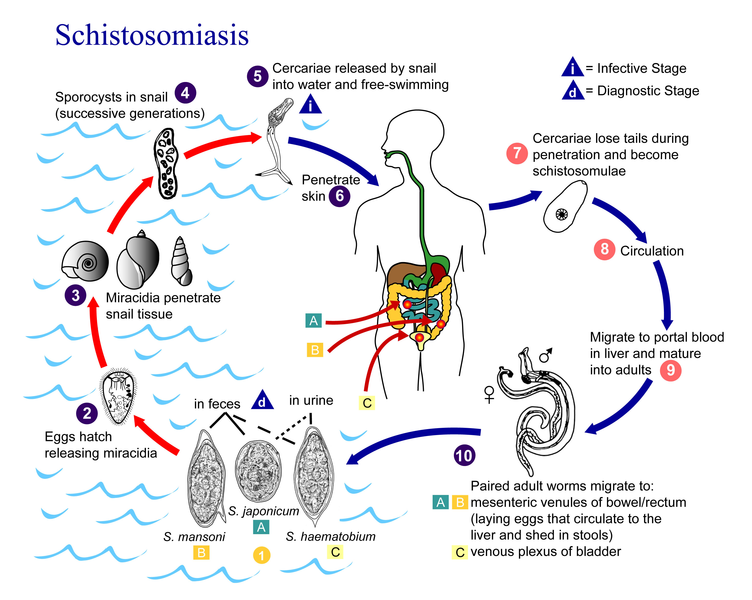Payl:Schistosomiasis Life Cycle.png

Gidak-on ning maong paunang tan-aw: 752 x 600 ka mga piksel. Uban pang mga resoluyon: 301 x 240 ka mga piksel | 602 x 480 ka mga piksel | 963 x 768 ka mga piksel | 1,280 x 1,021 ka mga piksel | 2,560 x 2,042 ka mga piksel | 2,936 x 2,342 ka mga piksel.
Tibuok resolusyon (2,936 × 2,342 pixels, size sa payl: 1.94 MB, MIME type: image/png)
Kaagi sa payl
I-klik ang petsa/oras aron makit-an ang hulagway sa payl niadtong panahona.
| Petsa/Takna | Thumbnail | Mga dimensyon | Tiggamit | Komento | |
|---|---|---|---|---|---|
| kasamtangan | 21:05, 21 Septiyembre 2010 |  | 2,936 × 2,342 (1.94 MB) | Leyo | {{Information |Description={{en|Eggs are eliminated with feces or urine (1). Under optimal conditions the eggs hatch and release miracidia (2), which swim and penetrate specific snail intermediate hosts (3). The stages in the snail include 2 generations o |
Mga paggamit sa payl
Ang mosunod nga mga panid misumpay niining payl:
Global nga paggamit sa payl
Kining ubang wiki naggamit ning maong payl:
- Paggamit sa ar.wikipedia.org
- Paggamit sa arz.wikipedia.org
- Paggamit sa cs.wikipedia.org
- Paggamit sa de.wikibooks.org
- Paggamit sa en.wikipedia.org
- Paggamit sa es.wikipedia.org
- Paggamit sa fr.wikipedia.org
- Paggamit sa hu.wikipedia.org
- Paggamit sa hu.wikibooks.org
- Paggamit sa ml.wikipedia.org
- Paggamit sa nl.wikipedia.org
- Paggamit sa pl.wikipedia.org
- Paggamit sa sv.wikipedia.org
- Paggamit sa uz.wikipedia.org
- Paggamit sa vi.wikipedia.org


